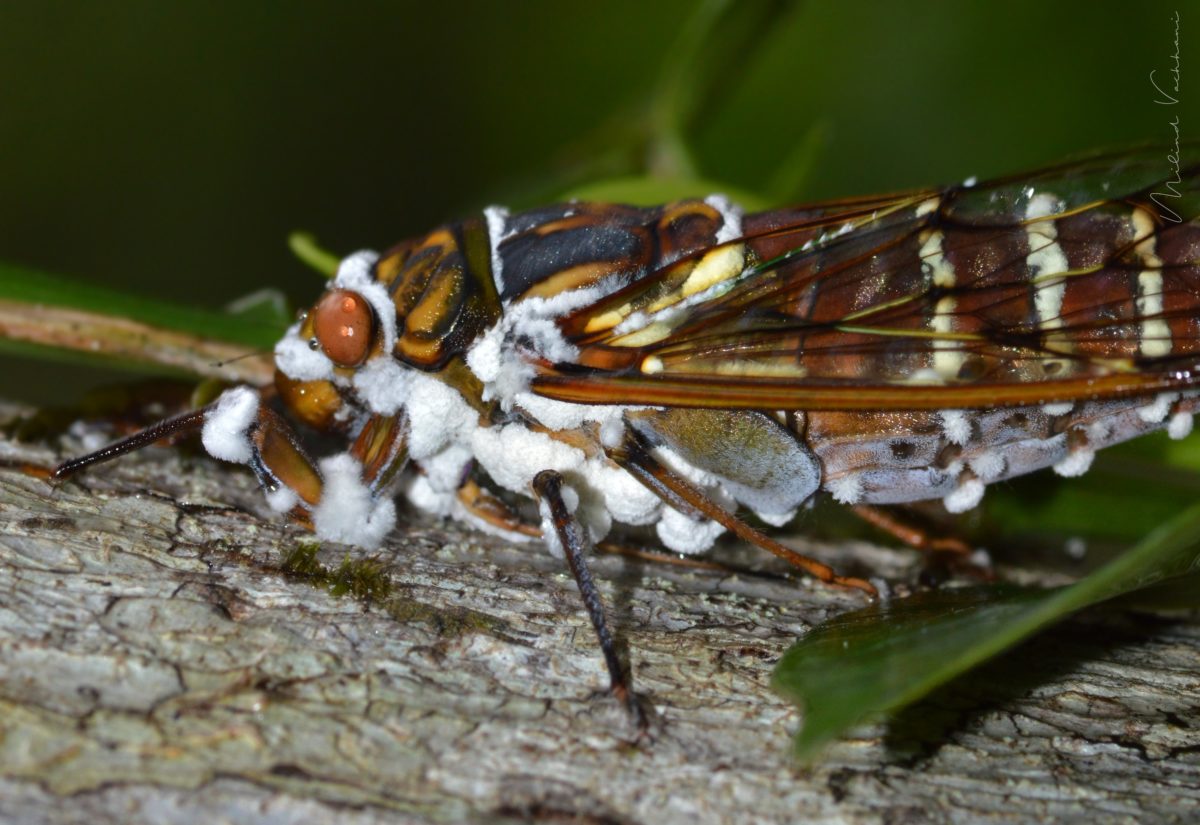Characteristics and Impact of Zombie Cicadas
Zombie cicadas, victims of a fungal infection, display peculiar traits that set them apart from their healthy counterparts. These infected cicadas exhibit erratic and aggressive behavior, characterized by an insatiable hunger that drives them to feed excessively on plant sap.
Their appearance undergoes a transformation as the fungus takes hold. Their bodies turn an eerie shade of orange or red, and their abdomens swell, often filled with fungal spores. The fungus manipulates the cicada’s behavior, making it more susceptible to predators and reducing its lifespan.
Ecological Impact
Zombie cicadas play a complex role in their ecosystem. They serve as a food source for birds, reptiles, and other predators, helping to maintain ecological balance. However, their excessive feeding can damage plants, potentially affecting the growth and survival of vegetation.
Additionally, the fungus that infects zombie cicadas can spread to other cicadas, potentially reducing the overall population and affecting the delicate balance of the ecosystem.
Lifecycle and Behavior of Zombie Cicadas
Zombie cicadas undergo a complex lifecycle that involves extended periods of dormancy underground and brief periods of emergence above ground. Their above-ground phase is characterized by unusual behaviors, including mating rituals and dispersal patterns.
Underground Development
Zombie cicadas spend the majority of their lives underground as nymphs. They feed on the roots of plants, gradually developing through several instars. The length of their underground stage varies depending on the species, but it typically ranges from 13 to 17 years.
Periodic Emergence
Once they reach maturity, zombie cicadas emerge from the ground in large numbers during specific years. These emergence events are synchronized within a given population, and they occur at intervals that are multiples of 13 or 17 years. The exact timing of emergence is influenced by environmental factors, such as temperature and soil moisture.
Mating Rituals, Zombie cicadas
After emerging from the ground, zombie cicadas engage in elaborate mating rituals. Males produce loud, distinctive calls to attract females. Females respond to these calls and mate with the males. The mating process involves the transfer of a sperm packet, known as a spermatophore, from the male to the female.
Dispersal Patterns
Following mating, female zombie cicadas disperse to lay their eggs. They search for suitable host plants, which are typically trees. The females insert their eggs into the stems of these plants, where they will develop into nymphs and begin their own underground lifecycle.
Scientific Research and Conservation Efforts

Scientific research on zombie cicadas is still in its early stages, but key discoveries have been made. Researchers have identified the fungus responsible for the zombie behavior, Ophiocordyceps unilateralis, and have studied its effects on the cicadas’ behavior and physiology. Ongoing investigations aim to understand the fungus’s life cycle, transmission mechanisms, and potential impacts on cicada populations.
Conservation Efforts
Conservation efforts for zombie cicadas are limited due to the lack of knowledge about their population status and the threats they face. However, researchers recommend protecting cicada habitats, such as forests and meadows, to ensure their survival. Additionally, reducing pesticide use can help prevent the spread of the fungus, as pesticides can harm both cicadas and the fungus.